Written By Rubaihayo Collins Paul
Having set foot in every corner of East Africa and beyond, I once believed that few places could still astonish me mostly from a country that raised me. But for all my globe-trotting, I must humbly admit: I once underestimated Uganda. Like many travelers, the fact that I was born and raised here, my first encounter with the “Pearl of Africa” was a fleeting blur an ambitious dash to see mountain gorillas in Bwindi, snap some wildlife photos in a park or two, and then move on, unaware of what I was leaving behind.
For years, I was guilty of what so many adventurers do: reducing Uganda to my home country and a brief checkbox on a crowded itinerary. My attention was lured by the headline-grabbing safaris of the Serengeti and Masai Mara. I came, I saw, I moved on. But then life surprised me when I reimagined the country that I call home. What I have discovered since has been nothing short of transformational. Hidden beneath the quiet hum of this unassuming nation is a mosaic of wonders biodiversity, culture, and beauty that quietly rivals, and often surpasses, Africa’s most celebrated destinations.
This piece isn’t just another travel essay; it’s an overdue love letter. A tribute to a place I call home. And an invitation. Uganda, in all its authenticity and allure, is waiting, gently, generously to be seen and explored.
Untouched Uganda When Winston Churchill called Uganda “the Pearl of Africa” in 1908, he wasn’t indulging in colonial exaggeration he was recognizing a truth that still rings clear more than a century later. Uganda is a geographical and ecological marvel: mist-wrapped mountain forests, endless golden savannahs, lush wetlands, and vast lakes all coexist within a landscape no larger than the UK. Here, in one week, you can come face to face with mountain gorillas, cruise past yawning hippos, track tree-climbing lions, and stand where the Nile begins its eternal journey.
Despite its treasures, Uganda has remained a whispered secret in travel circles, often overshadowed by its louder neighbours. Global marketing budgets and infrastructure differences have kept it off many travellers’ radars but therein lies its magic. In Uganda, the wild is still wild. The culture is alive, not curated. The beauty is real, not rebranded.
Uganda is not just a destination, it is a revelation. A place where every mile surprise, and every encounter feels personal. Let me take you there.
Bwindi Impenetrable National Park
Where Mist Meets Magic In the heart of southwestern Uganda lies Bwindi Impenetrable National Park, a place where ancient trees disappear into clouds and time seems to stand still. Here, trekking through dense forest and tangled vines, you enter a realm that feels primordial. The experience of locking eyes with a mountain gorilla watching it cradle its young or quietly chew on leaves is nothing short of spiritual. More than wildlife tourism, this is communion with a species that mirrors our emotions, gestures, and social bonds.
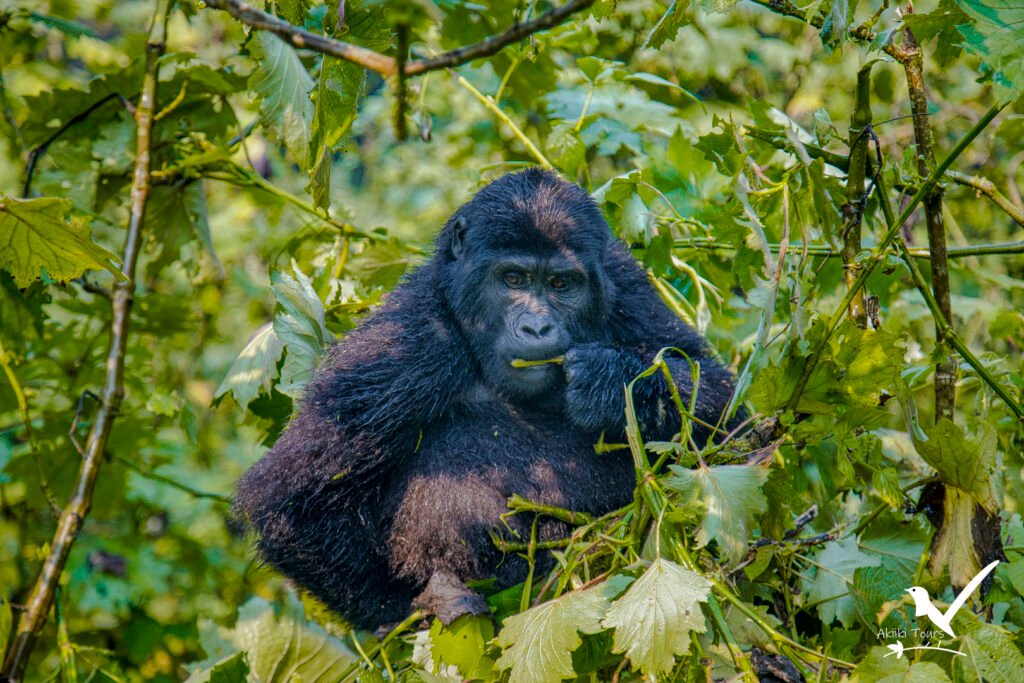
Unlike its neighbouring destinations, Uganda’s gorilla experience is rooted in journey, not just arrival. The trek itself winds through steep trails and thick undergrowth, demanding effort and offering serenity in equal measure. When your guide finally signals the presence of a silverback nearby, and you stand breathless just meters away from this gentle giant, you realize this moment which is earned through sweat and silence will forever mark your memory.
Essential Info Highlights:
Gorilla trekking through ancient rainforest to encounter mountain gorilla families. Gorilla tracking permits are required and limited (~ $800 USD, book in advance)
Best Place to Stay: Bwindi Lodge (Volcanoes Safaris Buhoma sector, luxury forest lodge) or Ichumbi Gorilla Lodge (Near Rushaga sector, comfortable mid-range lodge)
Getting there: 8–10 hour drive from Kampala or 1-hour flight to Kihihi/Kisoro airstrip
Murchison Falls National Park
Where the Nile Roars There are places on Earth where nature seems to rise in exaltation and Murchison Falls is one of them. Here, the mighty Nile River is squeezed through a mere seven-meter cleft in the rocks, erupting into a cascade so powerful, so thunderous, it sends mist soaring and rainbows spinning through the air. To stand at the top of the falls is to feel the planet exhale; to approach it from below by boat is to witness raw majesty unfold.
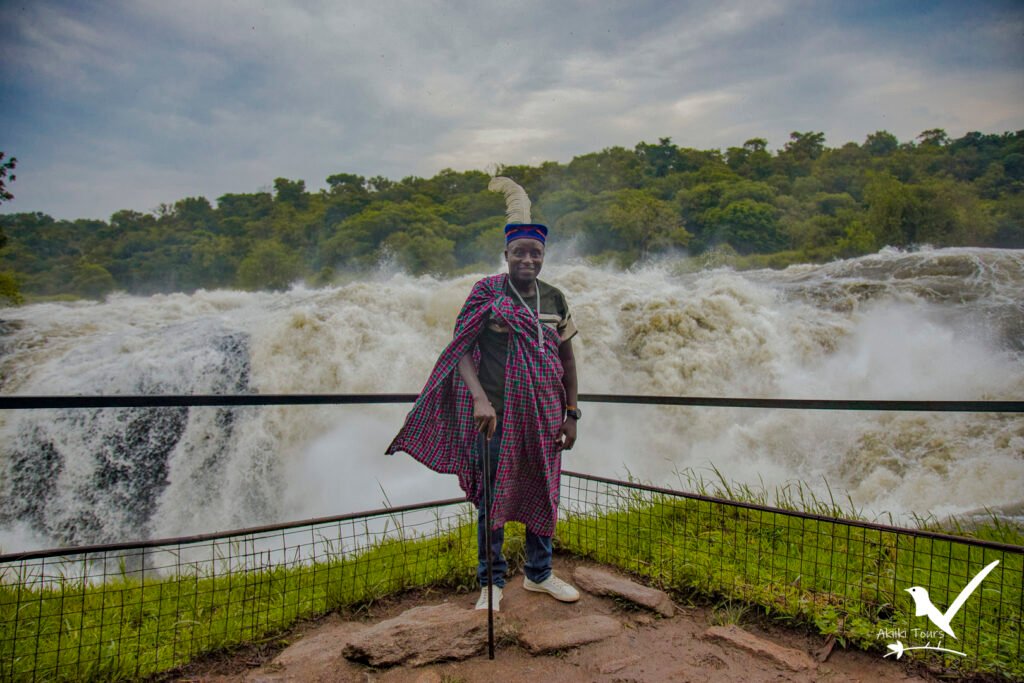
A cruise along the Nile here is a living gallery of life: pods of hippos wallow lazily, crocodiles lurk with ancient patience, and elephants quench their thirst along verdant banks. In the golden savannah that stretches beyond, giraffes parade through acacias and lions rest beneath the shade, watching antelope herds pass like whispers on the wind. And perhaps the greatest wonder of all? You’ll often experience these marvels without another vehicle in sight solitude in the wild, a rare treasure.
Essential Info
Highlights: Witness the Nile explode through a narrow gorge and enjoy a classic savannah game drive • Best Place to Stay: Paraa Safari Lodge (Nile riverfront, long-established upscale lodge) or Pakuba Safari Lodge (Mid-range lodge with rich wildlife presence)
Getting there: 5–6 hour drive from Kampala or 1-hour flight to Pakuba airstrip
Queen Elizabeth National Park
Lions in the Trees, Birds in the Sky In the fertile valleys between the Rwenzori Mountains and Lake Edward lies Queen Elizabeth National Park a sanctuary where the rhythms of the wild unfold with poetry and precision. While its plains pulse with classic African game, it’s the Ishasha sector that steals the spotlight, where lions take to trees as if they were born to perch above the savannah.
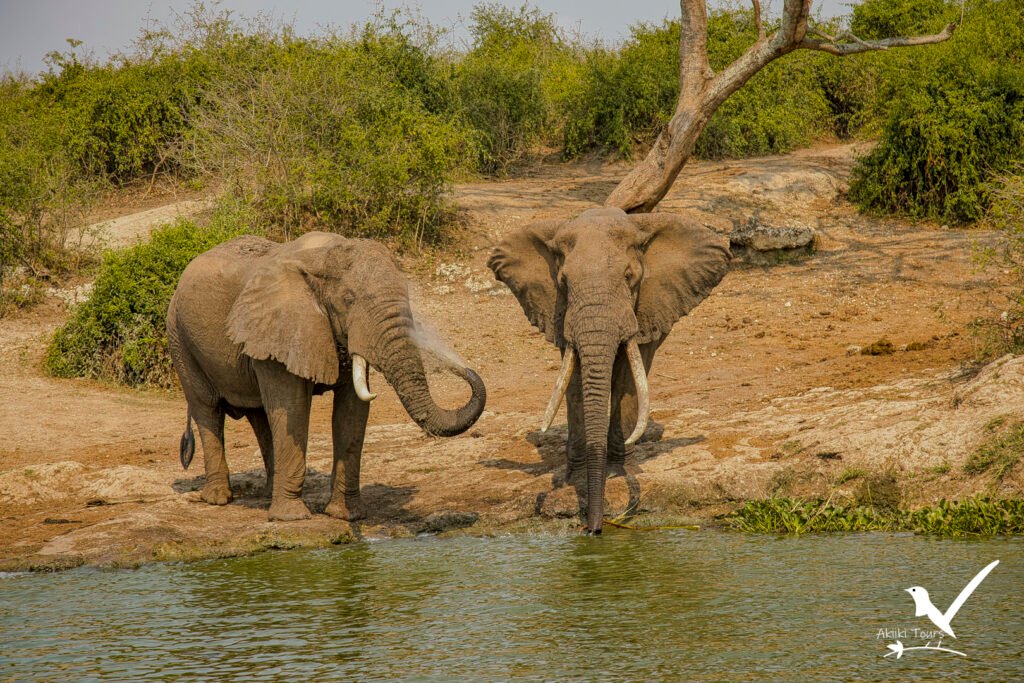
These tree-climbing lions are a marvel of adaptation, their tawny forms sprawled gracefully across fig branches, as if sculpted by sunlight and breeze. Theories abound: is it for respite from insects, a better hunting perch, or simply a royal view? Whatever the reason, the sight remains unforgettable.
Beyond the lions, Queen Elizabeth National Park is a harmony of habitats. The Kazinga Channel cruise drifts through one of Africa’s densest concentrations of hippos and water birds. Elephants wade into muddy banks while kingfishers dart across the water’s surface. Game drives reveal antelope herds silhouetted against the backdrop of the legendary Mountains of the Moon. It is a place of grandeur and quiet drama, where every corner holds a story.
Essential Info Highlights:
Spot tree-climbing lions in Ishasha and cruise the hippo-rich Kazinga Channel
Best Place to Stay: Mweya Safari Lodge (Luxury lodge at the Channel’s edge) or Enganzi Game Lodge (Mid-range option with panoramic views)
Getting there: 7–8 hour drive from Kampala or a charter flight to Mweya airstrip
Kibale National Park
Primate Kingdom of the Rainforest In the emerald heart of western Uganda lies Kibale National Park perhaps the most intimate forest experience in Africa. Known as the “Primate Capital of the World,” Kibale is home to 13 primate species, including one of our closest relatives: the chimpanzee.
Trekking here is a ballet of anticipation. You walk beneath cathedral-like trees, their canopies alive with birdsong and monkey chatter. The air is thick with mystery, and then, suddenly a whoop, a rustle, a flash of movement. You find them: a family of chimpanzees moving purposefully through the foliage. Their eyes meet yours. Curious. Alive. Kin.
Unlike gorilla treks, which are limited to one hour of observation, Kibale offers the chimp habituation experience a full day with researchers, shadowing a chimp community as they rise, feed, travel, and nest. It’s as immersive as nature tourism gets: the forest becomes your classroom, the chimps your professors.
And it’s not just about chimps. Red colobus monkeys with crimson cloaks swing beside black-and-white colobus, while bush babies blink from the undergrowth at dusk. Kibale humbles and enlightens in equal measure.
Essential Info Highlights:
Track wild chimpanzees and explore Africa’s most primate-rich forest
Best Place to Stay: Primate Lodge Kibale (Inside the park, luxury eco-lodge) or Turaco Treetops (Modern eco-retreat with treetop views near the park gate)
Getting there: 5–6-hour drive from Kampala via Fort Portal
Jinja
Where the Nile Is Born and Adventure Begins In Jinja, where Lake Victoria spills forth as the Nile, you stand at the beginning of a river that has carved civilizations and fed legends. But this is no mere historical footnote Jinja pulses with a youthful energy that makes it Uganda’s adrenaline capital. Here, you can raft down world-class Grade 5 rapids, bungee jump over the river’s thunder, or simply soak in the view with a paddle in hand and your heartbeat still catching up.
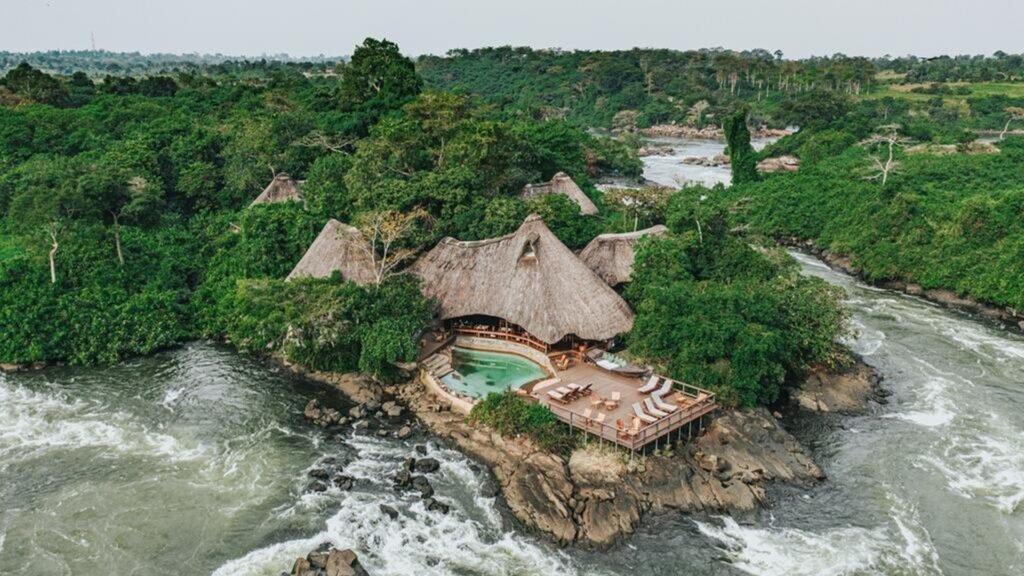
The charm of Jinja lies not only in its thrills but in its atmosphere. The town is a mosaic of colonial charm and modern creativity: artisan cafés, riverside markets, and cheerful locals ready to share a story or guide you to the next great view. Whether you’re kayaking through calm currents, ziplining over forest canopies, or just sipping a local brew as the sun melts into the Nile, Jinja is an invitation to feel more alive.
Essential Info Highlights:
White-water rafting, bungee jumping, and exploring the source of the Nile • Best Place to Stay: Wildwaters Lodge (Luxury lodge on a private Nile island) or Nile Porch (Rustic-luxe tents with river views and warm hospitality) Getting there: 2–3 hour drive from Kampala along the Jinja Highway
Kidepo Valley:
Africa’s Forgotten Eden Tucked deep into Uganda’s northeastern frontier, where the savannahs of South Sudan flirt with the escarpments of Kenya, lies a wilderness so raw, so remote, it feels like a secret whispered by the wind Kidepo Valley National Park. This is where Africa shows you its soul.
Kidepo is not just a park; it is an untamed theatre of life, with sweeping golden plains, rugged hills, and ancient riverbeds that trace the movements of wildlife unburdened by tourist throngs. Massive herds of buffalo stampede across the horizon like thunder given legs. Lions perch atop granite outcrops surveying the land as if time itself waits on their command. Cheetahs, rare and regal, streak through open grasslands. And in the distance, the Morungole Mountains rise like ancestral guardians.
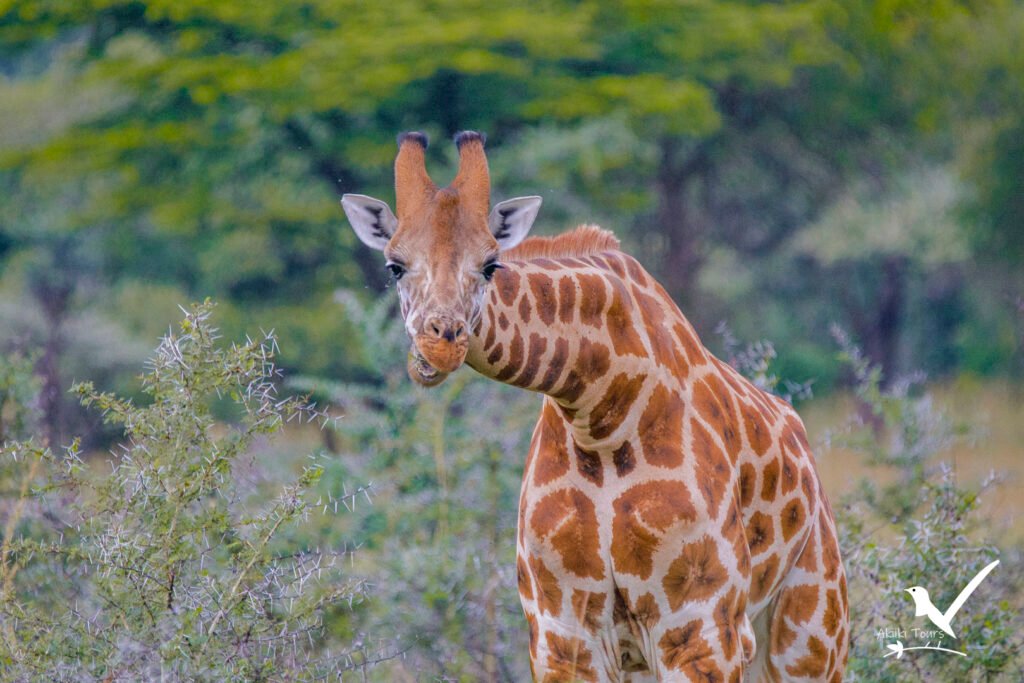
This remote park is also home to the Karamojong people, pastoralists whose culture remains as vivid and resilient as the land they call home. A visit here is not merely a safari it is a cultural and ecological pilgrimage, a glimpse of Africa untouched by mass tourism.
Essential Info Highlights:
Exceptional game drives with near-private sightings, unique cultural experiences with Karamojong communities
Best Place to Stay: Apoka Safari Lodge (Boutique luxury within the park, outdoor bathtubs overlooking wildlife), or Kidepo Savannah Lodge (Charming mid-range lodge with expansive Narus Valley views) Getting there: 10–12 hour drive from Kampala or 2-hour flight to Kidepo airstrip
Mgahinga
Where Volcanoes Whisper and Gold Leaps Through Trees In Uganda’s far southwestern tip, where borders blur and cultures converge, Mgahinga Gorilla National Park rises in poetic defiance. Here, three extinct volcanoes Muhabura, Gahinga, and Sabyinyo—stand like ancient monks in meditation, draped in mist and mystery. Mgahinga may be the smallest park in Uganda, but it is a colossus in spirit.
While gorilla tracking is possible here too, the park’s crown jewel is the golden monkey a dazzling, energetic creature found only in the Virunga Mountains. Tracking these elusive primates through bamboo forests is a dance of delight. Their vibrant coats and curious antics light up the forest like sunbeams.
What makes Mgahinga deeply spiritual, however, is the Batwa Trail a guided journey led by Uganda’s indigenous forest people, the Batwa. They share ancient songs, survival techniques, and rituals that honor the spirits of the land. Walking this path is not just educational; it’s humbling. You’re invited into a worldview where forest and soul are inseparable.
Essential Info Highlights:
Golden monkey tracking, gorilla treks, the cultural richness of the Batwa Trail
Best Place to Stay: Mount Gahinga Lodge (Luxury lodge run by Volcanoes Safaris, cultural immersion included) or Amajambere Iwacu Camp (Community-run, simple but deeply authentic)
Getting there: 9–10 hour drive from Kampala or 1-hour flight to Kisoro airstrip
Ziwa Rhino Sanctuary: Hope on the Hoof
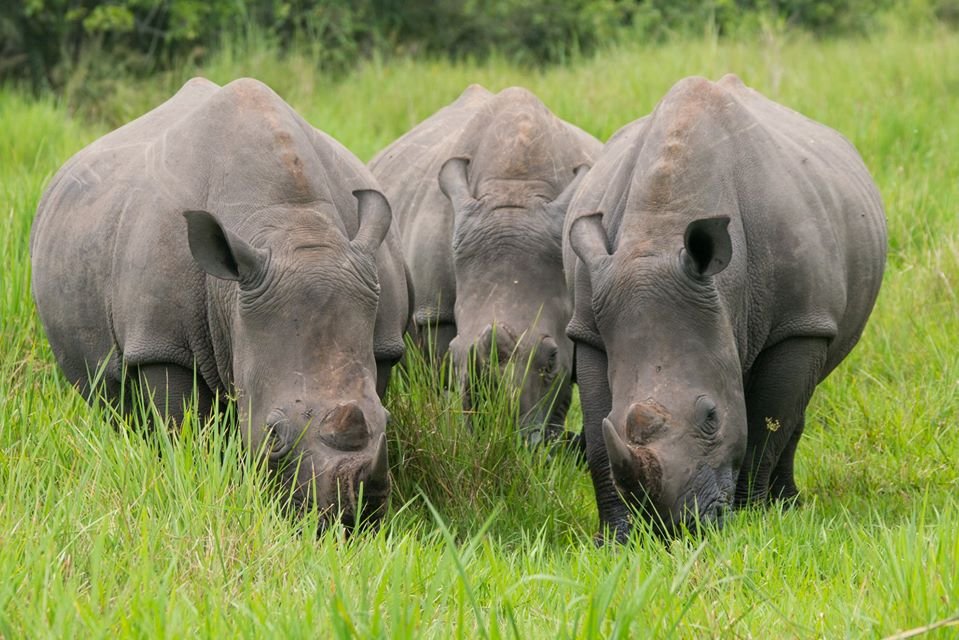
Uganda once had abundant rhino populations, but by 1983, both black and white rhinos had been completely wiped out by poaching and civil unrest. The Ziwa Rhino Sanctuary represents the nation’s commitment to restoring these magnificent creatures to their rightful place in Uganda’s ecosystems. Unlike traditional safaris, where rhino sightings often involve distant views through binoculars, Ziwa offers rhino tracking on foot. Accompanied by knowledgeable rangers, you’ll approach these prehistoric-looking giants at respectful distances that nonetheless allow for extraordinary observation and photography.
What makes this experience special is witnessing conservation in action seeing calves born on Ugandan soil for the first time in decades and knowing that your visit directly supports efforts to eventually reintroduce rhinos to Uganda’s national parks. Ziwa is a reminder that, in Uganda, the future of wildlife is being written anew, one hoofprint at a time.
Essential Info
Highlights: Track wild white rhinos on foot in Uganda’s only rhino sanctuary
Best Place to Stay: Amuka Lodge (Inside sanctuary, comfortable timber cottages with pool — only lodge on site)
Getting there: 2.5–3 hour drive from Kampala via Gulu Highway
Lake Bunyonyi: Africa’s Inland Paradise
In Uganda’s southwestern highlands lies a scene of such surreal beauty it could grace any postcard. Lake Bunyonyi “place of many little birds” showcases 29 emerald islands scattered across Africa’s second deepest lake, surrounded by terraced hills that plunge dramatically into crystal waters. Unlike most African lakes, Bunyonyi offers something precious: crocodile and hippo-free waters perfect for swimming. Each island carries its own story from the haunting history of Punishment Island to vibrant community life on larger islands where the Bakiga people maintain traditional ways.
Whether paddling a dugout canoe through morning mist, hiking terraced hillsides for panoramic views, or simply relaxing as birdsong fills the air, Bunyonyi provides the perfect peaceful counterpoint to wildlife adventures. This tranquil haven just a short drive from Bwindi’s gorillas might well be Uganda’s most photogenic landscape.
Essential Info
- Highlights: Canoe between 29 emerald islands on Africa’s second-deepest lake, surrounded by terraced hills
- Best Place to Stay: Birdnest Resort Bunyonyi (Boutique lakeside resort with stylish rooms, great restaurant and lakeside deck — near Rutinda) or Arcadia Lodges Lake Bunyonyi (Mid-range lodge with panoramic lake views from hillside cottages)
- Getting there: 8–9-hour drive from Kampala via Kabale town
Lake Victoria: Africa’s Inland Paradise
Uganda claims the lion’s share of Lake Victoria Africa’s largest lake and the source of the Nile. While the mainland shores offer fascinating glimpses into fishing communities and lakeside life, it’s the Ssese Archipelago that provides the country’s most unexpected escape. These 84 islands scattered across the northwestern corner of Lake Victoria feel almost Caribbean in their laid-back atmosphere. Pristine beaches, swaying palms, and clear waters invite relaxation after more active safari adventures. Ssese Archipelago, the largest island, offers accommodations ranging from backpacker-friendly to luxury, while smaller islands provide even more seclusion.
What makes these islands special is their distinctive character each maintains unique traditions, folklore, and crafts. Life here moves at the pace of the breeze, inviting visitors to slow down, connect, and savor the simple joys of island living think lazy afternoons in hammocks, sunset cruises, and the melodious calls of exotic birds. The minimal tourist development means authentic cultural exchanges and genuinely warm Ugandan hospitality without the commercial overlay found in more established destinations.
Essential Info
- Highlights: Unwind on sandy beaches and explore fishing villages on tropical islands
- Best Place to Stay: Brovad Sands Lodge (Well-rated beach resort with modern cottages, Kalangala) or Ihunde Camping Resort (Bulago Island)
- Getting there: 3-hour ferry from Entebbe (MV Kalangala) or 45-min ferry from Bukakata
Kampala: Culture and Continuity
Finally, no exploration of Uganda would be complete without experiencing its vibrant capital. Unlike many African capitals that feel disconnected from their country’s natural attractions, Kampala reflects the “pearl” metaphor in its setting spread across seven hills, with views extending to Lake Victoria. The UNESCO World Heritage-listed Kasubi Tombs, burial place of four Buganda kings, showcase traditional architecture on a magnificent scale. Kampala’s markets burst with color and energy Owino Market for authentic immersion, Craft Village for artisanal souvenirs. As evening falls, the city’s reputation for vibrant nightlife and outstanding restaurants comes alive, with everything from traditional dance performances to sophisticated cocktail bars. Something certainly not to be missed if you want an immersive Uganda experience!
Uganda Awaits
To close out, travel in Uganda is to be reminded why we travel at all: to see the world not as we imagine it, but as it truly is wild, wondrous, and full of surprises. The relative obscurity of Uganda on the international tourism scene translates to extraordinary benefits for visitors today. Wildlife sightings happen without dozens of other vehicles jostling for position. Cultural interactions feel genuine rather than performative. Prices remain reasonable compared to neighboring countries offering similar experiences.
What strikes me most, having now called Uganda home, is how the country has preserved authentic wilderness experiences while much of Africa rushes toward mass tourism. This won’t indeed, shouldn’t last forever. Uganda deserves recognition for its conservation successes and natural wonders. So consider this both an invitation and a gentle warning: visit the Pearl of Africa now, while it still shines with untouched brilliance. Like me, you might discover that the world’s best-kept safari secret has been hiding in plain sight all along.
So come with your sense of wonder intact. Uganda is not just Africa’s best-kept secret it’s Africa, raw and resplendent, waiting to be loved.



